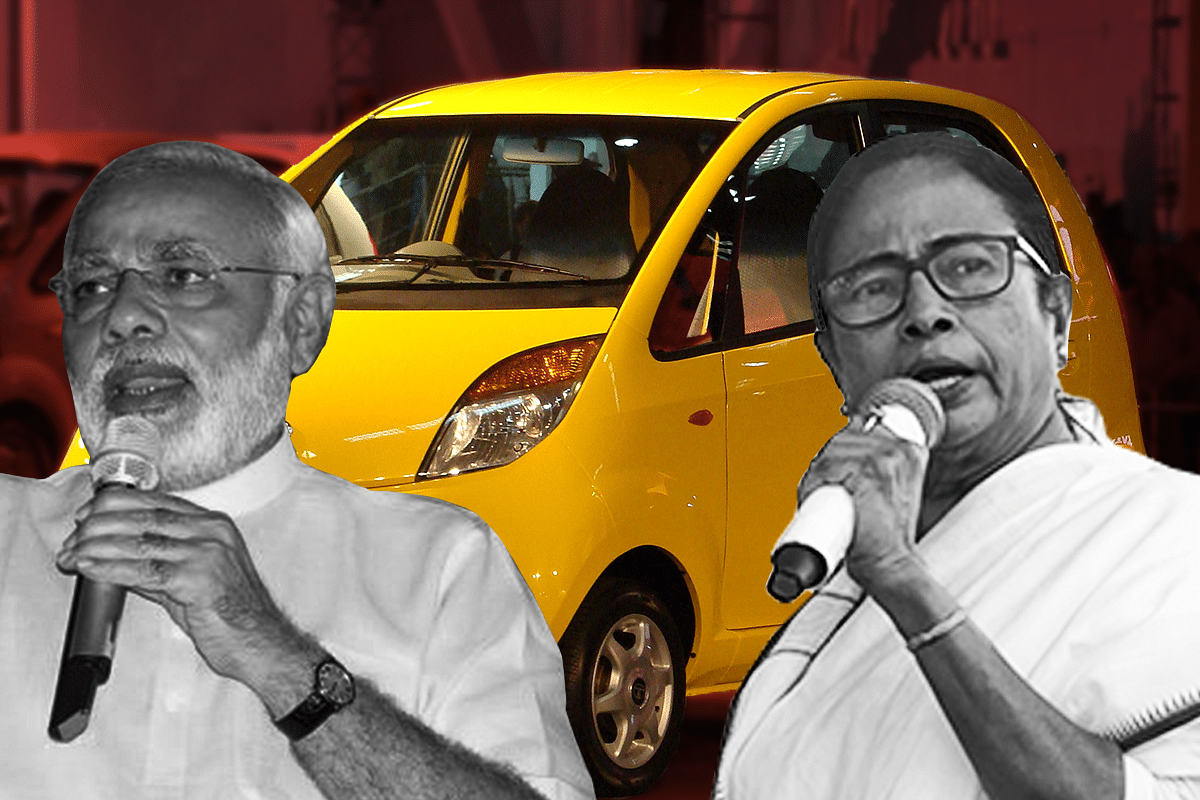Politics
13 Years After Tata Nano Drove Out Of West Bengal, State Faces Choice Between Singur And Sanand Models
- Mamata Banerjee became chief minister after forcing Tata Nano out of Singur while Narendra Modi became prime minister after welcoming it in Sanand.

The Tata Nano Singur story
The Tata Nano Singur plant in West Bengal was shifted to Sanand in Gujarat in 2008 and the Sanand industrial region emerged as a major manufacturing hub in its aftermath.
The Tata Nano plant resulted in a mushrooming of automotive and other ancillary industries in Sanand – while Singur continued with its predominantly agrarian-based economy.
The protests in Singur resulted eventually led to a new government in West Bengal.
The question that many have now is whether life has come a full circle for the Trinamool – and whether in 2021 people of West Bengal will ask for a change again?
In this context, it is important to compare the performance of West Bengal with other states in terms of improvement in Human Development Indicators.
One of the key stories over the last two decades has been development and growth uplifting the standards of living across states irrespective of the political party in power. The question is, how well does West Bengal stack against these trends?
Based on HDI, West Bengal is lower than the national average; and the same is true if we look at the consumption based HDIs also.
Given India’s stage of development, it stands at the risk of unequal growth. That is, over the course of next decade, we may have some states that see their living standards converge to that of advanced economies, while on the other hand there may still be regions that have the same living standards as some of the lesser developed regions of the world.
This poses as a serious challenge for policymakers, more so given India’s federal structure, to push for economic growth within their respective states. Luckily, there is a sense of growing competition between Indian states to attract greater investment and boost economic activity in their respective states.
In the end, we may have to start holding states accountable for their developmental progress – and best way to ensure accountability is through the electoral process as it serves as an important feedback loop in electoral democracy.
The Singur–Sanand comparison, therefore, becomes important as it started a process – and over time, the then chief minister of Gujarat emerged as the prime minister while Mamata Banerjee emerged as the chief minister of West Bengal.
It is 2021, and Sanand has developed significantly in this period, while the farmers of Singur find their land unfit for cultivation. There are questions that people from the region are asking – and that is, whether their protests benefitted them in any way – or whether, they shot themselves in their own foot?
Many may be asking these questions as we witnesses a heated electoral campaign – but underneath the politics is a policy preference which will be revealed by the voters – and that is the signal that we must be looking forward to.
Also read—Singur: A sad tale of lost opportunities
This is first part of a two-part article that looks at West Bengal and its development in comparison to other states. Second part focuses on presenting data to compare what West Bengal got right, and where it got wrong.
Views expressed are those of the author and should not be ascribed to the institutional affiliation of the author.
Support Swarajya's 50 Ground Reports Project & Sponsor A Story
Every general election Swarajya does a 50 ground reports project.
Aimed only at serious readers and those who appreciate the nuances of political undercurrents, the project provides a sense of India's electoral landscape. As you know, these reports are produced after considerable investment of travel, time and effort on the ground.
This time too we've kicked off the project in style and have covered over 30 constituencies already. If you're someone who appreciates such work and have enjoyed our coverage please consider sponsoring a ground report for just Rs 2999 to Rs 19,999 - it goes a long way in helping us produce more quality reportage.
You can also back this project by becoming a subscriber for as little as Rs 999 - so do click on this links and choose a plan that suits you and back us.
Click below to contribute.
Latest